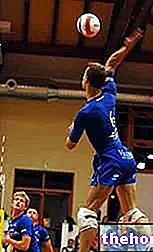To prevent and combat back pain, nothing is more effective than correct information. Unfortunately, there are erroneous beliefs in this regard which are based on concepts without any foundation or which have now been superseded by modern discoveries in the scientific field. With this article we will try to shed some light by analyzing the truthfulness of the most widespread beliefs about back pain.
Rest promotes healing
False. When at the origin of back pain there are no major injuries to the structures that make up the spine, excessive rest not only does not accelerate recovery but is even harmful. Prolonged immobility weakens the bones and muscles, making it even more ineffective in supporting the stresses that weigh on the back.
Without trying too hard and listening to your body, it is therefore necessary to gradually resume normal life habits. Already after a few days, in relation to the extent of the trauma and pain, it is possible to practice moderate physical activity, walking, swimming or cycling for a few tens of minutes.
Anti-inflammatory drugs help heal back pain
False. Medicines are only useful in the acute phase to relieve pain but do not act on the causes that gave rise to back pain. It should also be remembered that pain is an alarm bell and that as such we must learn to listen to it. A patient who takes painkillers may mistakenly believe that they have recovered from back pain. The absence of pain could lead him to make sudden movements or to engage in heavy work activities, with the risk of further aggravating the situation.
Choosing a firm mattress is essential
False. The back pain that accompanies the awakening of millions of people is mainly due to the position taken during rest. Less importance is instead attributed to the mattress, which in any case must be compact (neither too rigid nor too soft) and of good quality.
If you have suffered from episodes of acute low back pain in the past, you should avoid sudden movements or excessive twisting while getting out of bed. In these cases, a hot shower can promote circulation, as it promotes tissue oxygenation and relieves pain.
In case of back pain, a specialist medical examination must be carried out promptly
False. Over 90% of low back pain episodes spontaneously regress within one month of their onset. For this reason, undergoing a specialist medical examination after a few days is completely useless.
Diagnostic tests (x-rays, CT scans, etc.) can be deceiving
True. Sometimes diagnostic tests show completely asymptomatic lesions, without being able to identify the true cause of origin of back pain.
Stress can be the cause of back pain
True. Emotional tensions contribute to contracting the paravertebral muscles, decreasing their elasticity. In a similar situation, the muscles lose their effectiveness in stabilizing the torso during movements, exposing the spine to more or less important injuries.
Exercises for the abdominals prevent low back pain
False. Even if a toned abdominal wall allows you to unload more than 40% of the weight on the lumbar vertebrae, in many cases it is more important to act on the elastic component than on the muscular strength. Since lower back pain is often caused by "excessive contraction of the lower back muscles and stressed in many abdominal exercises, incorrect technique could even make the situation worse."
Abdominal training is therefore only useful if integrated into a program based on stretching and postural control exercises carried out under the supervision of an expert in the therapeutic-motor sciences.
Optimism and knowledge of pathology help heal back pain
True. Pessimism and fear of worsening the situation negatively affect back health. When you suffer from low back pain it must be remembered that it is an extremely widespread disease that is usually not due to serious problems.
With a little patience it is therefore necessary to wait a couple of weeks, without getting depressed or limiting too much movement.
Cigarette smoking can cause back pain
True. If the movement is the oxygen of the spine, the same cannot be said for smoking which, by decreasing the oxygenation of the tissues, makes the lumbar muscles less effective in supporting the loads that weigh on this area.
Physical activity can be dangerous
True. If performed poorly, certain exercises can further worsen an already compromised situation.
However, it should be borne in mind that, especially in the first period, it is completely normal to feel slight discomfort in the back during technically and physiologically correct exercises. These discomforts generally disappear quickly, leaving room for all the benefits deriving from regular physical activity.
Swimming is the best sport for back health
False. There is no ideal physical activity, just as there is no one that is harmful to the back. Rather than wondering what the best sport is, it would be better to ask yourself what are the rules to be respected to ensure well-being and health for your back. realistic and choose a level suitable for your physical condition. The activity must always begin with an adequate warm-up and must be carried out with constancy and progression. At least during the first period it is good to rely on an expert figure able to correct any errors and recommend the most suitable route for your conditions.
Swimming, mistakenly considered by many to be the best activity for the back, is actually a sport that in some ways is even counterproductive. The muscles that stabilize the spine need stimuli to improve tone and efficiency. stresses are minimized and are inadequate to significantly improve the tone of these muscles.
Running puts too much strain on the back, making the situation worse
False. Even if the continuous repetition of microtraumas contributes to the onset of lower back pain, if carried out progressively and regularly, running is absolutely not dangerous for the back.
Obviously if we start running on asphalt a deconditioned man who is obviously overweight, his back will be affected and in all probability it will be painful.
The effort you intend to practice must therefore be commensurate with your physical condition regardless of the sporting discipline you perform. Also the choice of suitable clothing and footwear is very important in order not to hinder your movements and protect your back and joints from impacts with the ground.
In the case of a herniated disc, the pain felt is always very intense and annoying
False. Sometimes, diagnostic tests show the presence of a slight disc protrusion or a "herniated disc" which is the cause of the pain. In reality, hernia is a fairly common disease, sometimes asymptomatic (about 25-30% of people who have a hernia do not suffer from back pain). Also for this reason, today the herniated disc is not always operated as it happened in the past.
If the pain also radiates down the leg, there is an involvement of the nerve structures
True. Cruralgia (pain that radiates to the front of the thigh) and sciatica or sciatica (pain that radiates to the back of the thigh and leg) originate when there is involvement of the vertebral nerve structures.
If you feel a slight tingling in these areas you do not need to lose heart as it could be a simple inflammation of the nerve roots, easily resolved with specific therapies and exercises.
Back pain and low back pain are synonymous
False. Back pain is a pathology that can affect the different parts of the spine (cervical, dorsal and lumbar sacral). The term low back pain is instead more specific and emphasizes the presence of pain spread exclusively along the lumbar area.
Strictly speaking, low back pain is not a pathology but a painful symptom that can arise for different causes, not identifiable with certainty.
There are over 30 possible causes of back pain
True. In clinical language we speak of low back pain as an idiopathic and multifactorial pathology.
The first term indicates that in most cases it is not possible to define with certainty the cause of onset. The multifactorial adjective is instead used to underline the existence of numerous causes of origin (physical, psychological, social, etc.) .
Low back pain can be prevented even in severe cases
True. It is never too late to improve the health of your back. Obviously, the greater the degree of impairment of the vertebral structures, the greater the precautions to be taken. As we have seen, prolonged rest can only worsen the situation and, for this reason, performing controlled and specific movements is essential even in the most serious situations.
Standing too long can cause back pain
True. Steady positions maintained for a long time can cause minor discomfort in the lower back. Also for this reason, long journeys by car are particularly annoying for those suffering from back pain. Frequently varying your position allows you to rest a part of the musculature, preventing it from contracting excessively.
Sitting for too long increases pain
True. Especially when assuming an incorrect position that is maintained for many consecutive hours.
For this reason, those who do sedentary work are at risk for back pain as a worker forced to work hard. Using a chair with good lumbar support can prevent such discomfort. In addition to frequently varying position, the worker can protect himself from back pain by standing up and walking for a few minutes.
High heels are bad for your back
True. Shoes with heels higher than 4-5 centimeters move the center of gravity of the body forward step by step. To maintain balance, this position must be compensated for by a lumbar arch which alters the distribution of loads on the vertebral discs. It is therefore advisable to wear comfortable shoes with low heels and anatomic insoles.
The type of breathing also affects back pain
True. Abdominal breathing helps to overcome muscle contractures. On the contrary, the chest breathing we are used to only further increases these tensions. It is therefore necessary to reacquire awareness of the breath, becoming aware of its spontaneity and naturalness.




























